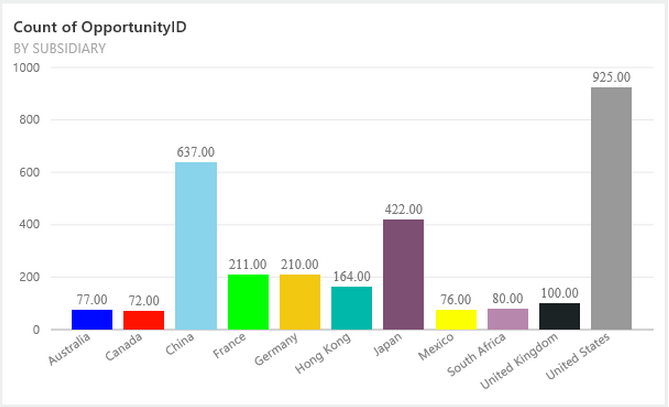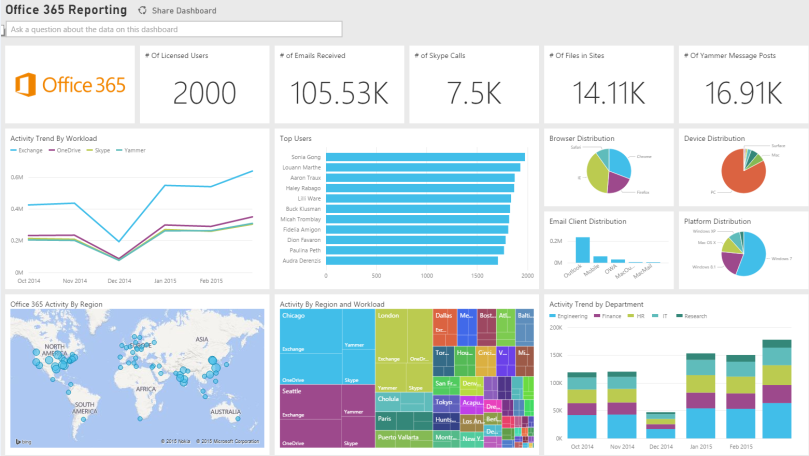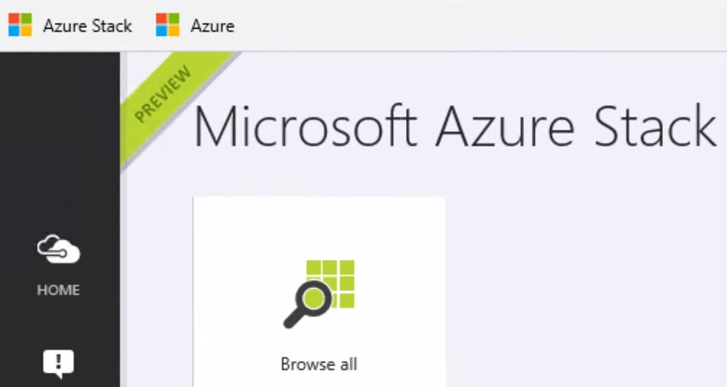So this week there was once again a whole host of updates with Power BI, as well as finally the official release of Office 2016.
It sure is a busy time be in Business Intelligence space, especially in the Microsoft space.
So let’s get into it…
Power BI – Desktop Update

So I woke up this morning to see that there has been a massive release in the Power BI Desktop application. I immediately downloaded and installed the update. I have already used some of the features today.
And there was a whole host of updates, too many to go through all of them here, but I would just like to highlight the ones which I think are really great additional features.
I am really enjoying the Report Authoring features, and I have mentioned it before but the drill up and drill down features are really great and allows for more details to be in the report which you will not initially see on face value.
Then under the data modelling section I have to say that I am currently not any DAX guru, but I do appreciate how powerful it is, and how you can really extend your data with so many DAX functions. In particular is the Calculated Table, which Chris Webb has already blogged about and has some great information here: Calculated Tables In Power BI
And there are some great new features with regards to Data Connectivity as well as Data Transformations & Query Editor improvements, which all forms part of Power Query. Which once again enables the author of the reports to enrich the data, which in turn will create great visualizations.
You can find out all about all 44 updates here: 44 New Features in the Power BI Desktop September Update
Power BI – Service Updates

So yet another great update on the Power BI platform.
I think that finally being able to customize the size of the tiles is really good. So that you can fit more meaningful information on your dashboard.
Another great service update is to be able to Share Read Only dashboards with other users. This is great because often you create dashboard and reports, which you want to share with users and let them interact with your data, but not make any changes.
As well as having more sample content packs which will be a great way to showcase how powerful Power BI is.
You can read about it and all other updates here: Power BI Weekly Service Update
Power BI – API Updates
There is no pretty picture for the API updates, but there are some great new features.
The one that I think is really good is the ability to be able to embed a Power BI tile into an application. So at least it gives you the ability to have the great features of Power BI in your application without having to go directly to Power BI.
I also see that there is the ability from what I can see to pass some filters or parameters into the Power BI report via the URL which is really good and can prove to extend the functionality.
These are the details in the API updates
- Imports API
- Dashboards API
- Tiles and Tile API
- Groups API
- Integrating Tiles into Applications
- Filtering Tiles integrated into your Application
You can find out all about it here: Power BI API updates roundup
Power BI – Another Mobile Update

The Microsoft team must be working 24 hours a day with the amounts of updates and additions that are coming out from Microsoft.
They have released some additional updates into the Mobile application which are great, as we all are well aware that having a mobile application really can help showcase your solution. As well as ensure that it gets to the right users and that they can see the related information.
You can find out about the updates to the IOS, Windows and Android details here: Power BI mobile Mid-September updates are here
Power BI – Visual Contest Results – People’s Choice Awards

As you can see above this is the first people’s choice award for the Visual Contest result, which I can see myself using that with my existing data.
You can find out about it and the other entries here: Power BI Best Visual Contest – 1st People’s Choice Award!
Power BI – Content Pack Stripe

Once again this was another great content pack update this week.
There are a whole host of people who are using the Stripe platform payment for their online business. From the really small guys to the big guys. And this gives everyone a really great and easy way to understand and visualize your data. As well as what payments you are getting.
You can find out more about it here: Monitor and Explore your Stripe data in Power BI
Office 2016

I am very happy to see that Office 2016, has been released before the actual year of 2016.
I have mainly been focused on all the features in Excel, due to being in BI. But there are a whole host of updates, fixes and new additions in Office 2016.
You can read all about it and all the details here: The new Office is here
Excel 2016 – Features

With Office 2016 being released this blog post from the Office team shows a lot of the great features that are available in Excel 2016.
It does showcase a lot of great features focused on Business Analysts, as well as how people can leverage all the new features in Excel 2016.
You can read up all about it here: New ways to get the Excel business analytics features you need
Power Query Update

With so many things going on within Power BI, there has been another great release with Power Query.
As you can see with the picture above it is great to finally have the ability to write your own custom MDX or DAX query to get the data which you require from your SSAS source.
Another great feature is the ability to extract a query from one of the steps within your current Power Query query, and then you can use this in another Power Query window. As they say it gives you the ability really easily use the same code over again, without having to do it all over again.
You can read all about it here: Power Query for Excel September 2015 update
Excel Future Prediction
I recently came across a really interesting article from some of the Industry experts within the BI space, and for them to predict how they see Excel’s use as well as where they see it fitting into the BI space in the upcoming years.
There were some really insightful and interesting details, which made me think about how Excel has evolved over the years, and with the current additional investments going into Excel, how this is going to be leveraged and improved in the years to come.
You can read all about their thoughts here: 27 MICROSOFT EXCEL EXPERTS PREDICT THE FUTURE OF EXCEL IN BUSINESS INTELLIGENCE
SQL Server Analysis Service 2012 – Tabular Update
There has been a CU update for SQL Server 2012, and one of the great updates relates to SSAS Tabular for columns that have a high cardinality. Which was a performance issue before this release.
It is great to see that this has been addressed, especially due to the fact that in SSAS Tabular there will be cases when columns will have a high cardinality. And even though it is often super quick, we would like everything to be as fast as possible.
You can read all about the updates to SQL Server CU 8 here: Cumulative update package 8 for SQL Server 2012
SQL Server Analysis Services 2016 – Extended Events

I think that it is great to see that we are finally getting some additional features and updates to Analysis Services.
When I read up about the extended events, this is something really great to see. I actually have been in an exercise to monitor what has been going on our SSAS instance both in terms of performance, as well as which users are accessing the cubes and what they are doing. And currently there is not a super elegant solution to achieve this.
With the extended events this makes it a lot easier and gives you the ability to quickly get the information that you require.
I also love it that you are able to have a live query, which you can use to see if you are specifically running something. As well as if you want to ensure that you are capturing the right events.
This is definitely something that I will be looking to use when we finally can install and use SQL 2016.
You can find out about all the details here: Using Extended Events with SQL Server Analysis Services 2016 CTP 2.3

















![clip_image002[4] clip_image002[4]](https://gqbi.files.wordpress.com/2014/07/clip_image0024_thumb1.jpg?w=437&h=628)
![clip_image002[1] clip_image002[1]](https://gqbi.files.wordpress.com/2014/04/clip_image0021_thumb.jpg?w=474&h=133)
![clip_image006[1] clip_image006[1]](https://gqbi.files.wordpress.com/2014/04/clip_image0061_thumb.jpg?w=529&h=439)
![clip_image008[1] clip_image008[1]](https://gqbi.files.wordpress.com/2014/04/clip_image0081_thumb.jpg?w=220&h=52)
![clip_image012[1] clip_image012[1]](https://gqbi.files.wordpress.com/2014/04/clip_image0121_thumb.jpg?w=502&h=77)
![clip_image014[1] clip_image014[1]](https://gqbi.files.wordpress.com/2014/04/clip_image0141_thumb.jpg?w=354&h=120)
![clip_image016[1] clip_image016[1]](https://gqbi.files.wordpress.com/2014/04/clip_image0161_thumb.jpg?w=597&h=76)
![clip_image018[1] clip_image018[1]](https://gqbi.files.wordpress.com/2014/04/clip_image0181_thumb.jpg?w=260&h=62)
![clip_image019[1] clip_image019[1]](https://gqbi.files.wordpress.com/2014/04/clip_image0191_thumb.jpg?w=502&h=77)
![clip_image021[1] clip_image021[1]](https://gqbi.files.wordpress.com/2014/04/clip_image0211_thumb.jpg?w=343&h=133)
![clip_image023[1] clip_image023[1]](https://gqbi.files.wordpress.com/2014/04/clip_image0231_thumb.jpg?w=570&h=83)
![clip_image025[1] clip_image025[1]](https://gqbi.files.wordpress.com/2014/04/clip_image0251_thumb.jpg?w=259&h=64)
![clip_image027[1] clip_image027[1]](https://gqbi.files.wordpress.com/2014/04/clip_image0271_thumb.jpg?w=537&h=131)
![clip_image029[1] clip_image029[1]](https://gqbi.files.wordpress.com/2014/04/clip_image0291_thumb.jpg?w=536&h=131)
![clip_image031[1] clip_image031[1]](https://gqbi.files.wordpress.com/2014/04/clip_image0311_thumb.jpg?w=254&h=51)
![clip_image033[1] clip_image033[1]](https://gqbi.files.wordpress.com/2014/04/clip_image0331_thumb.jpg?w=418&h=230)
![clip_image035[1] clip_image035[1]](https://gqbi.files.wordpress.com/2014/04/clip_image0351_thumb.jpg?w=553&h=148)
![clip_image037[1] clip_image037[1]](https://gqbi.files.wordpress.com/2014/04/clip_image0371_thumb.jpg?w=555&h=146)
![clip_image004[4] clip_image004[4]](https://gqbi.files.wordpress.com/2014/03/clip_image0044_thumb1.jpg?w=51&h=70)
![clip_image006[4] clip_image006[4]](https://gqbi.files.wordpress.com/2014/03/clip_image0064_thumb1.jpg?w=292&h=74)
![clip_image010[4] clip_image010[4]](https://gqbi.files.wordpress.com/2014/03/clip_image0104_thumb.jpg?w=204&h=55)
![clip_image020[6] clip_image020[6]](https://gqbi.files.wordpress.com/2014/03/clip_image0206_thumb.jpg?w=146&h=54)
![clip_image022[4] clip_image022[4]](https://gqbi.files.wordpress.com/2014/03/clip_image0224_thumb.jpg?w=338&h=148)
![clip_image026[4] clip_image026[4]](https://gqbi.files.wordpress.com/2014/03/clip_image0264_thumb.jpg?w=60&h=71)
![clip_image028[4] clip_image028[4]](https://gqbi.files.wordpress.com/2014/03/clip_image0284_thumb.jpg?w=243&h=157)
![clip_image030[4] clip_image030[4]](https://gqbi.files.wordpress.com/2014/03/clip_image0304_thumb.jpg?w=300&h=100)
![clip_image032[4] clip_image032[4]](https://gqbi.files.wordpress.com/2014/03/clip_image0324_thumb.jpg?w=101&h=102)
![clip_image034[4] clip_image034[4]](https://gqbi.files.wordpress.com/2014/03/clip_image0344_thumb.jpg?w=199&h=121)
![clip_image036[4] clip_image036[4]](https://gqbi.files.wordpress.com/2014/03/clip_image0364_thumb.jpg?w=378&h=63)
![clip_image038[4] clip_image038[4]](https://gqbi.files.wordpress.com/2014/03/clip_image0384_thumb.jpg?w=400&h=73)
![clip_image042[4] clip_image042[4]](https://gqbi.files.wordpress.com/2014/03/clip_image0424_thumb.jpg?w=400&h=333)
![clip_image044[4] clip_image044[4]](https://gqbi.files.wordpress.com/2014/03/clip_image0444_thumb.jpg?w=863&h=504)
![clip_image046[4] clip_image046[4]](https://gqbi.files.wordpress.com/2014/03/clip_image0464_thumb.jpg?w=239&h=61)
![clip_image050[4] clip_image050[4]](https://gqbi.files.wordpress.com/2014/03/clip_image0504_thumb.jpg?w=473&h=62)
![clip_image054[4] clip_image054[4]](https://gqbi.files.wordpress.com/2014/03/clip_image0544_thumb.jpg?w=329&h=342)
![clip_image020[7] clip_image020[7]](https://gqbi.files.wordpress.com/2014/03/clip_image0207_thumb.jpg?w=146&h=54)
![clip_image056[4] clip_image056[4]](https://gqbi.files.wordpress.com/2014/03/clip_image0564_thumb.jpg?w=178&h=139)
![clip_image058[4] clip_image058[4]](https://gqbi.files.wordpress.com/2014/03/clip_image0584_thumb.jpg?w=447&h=119)
![clip_image062[4] clip_image062[4]](https://gqbi.files.wordpress.com/2014/03/clip_image0624_thumb.jpg?w=233&h=119)
![clip_image064[4] clip_image064[4]](https://gqbi.files.wordpress.com/2014/03/clip_image0644_thumb.jpg?w=448&h=66)
![clip_image066[4] clip_image066[4]](https://gqbi.files.wordpress.com/2014/03/clip_image0664_thumb.jpg?w=286&h=260)